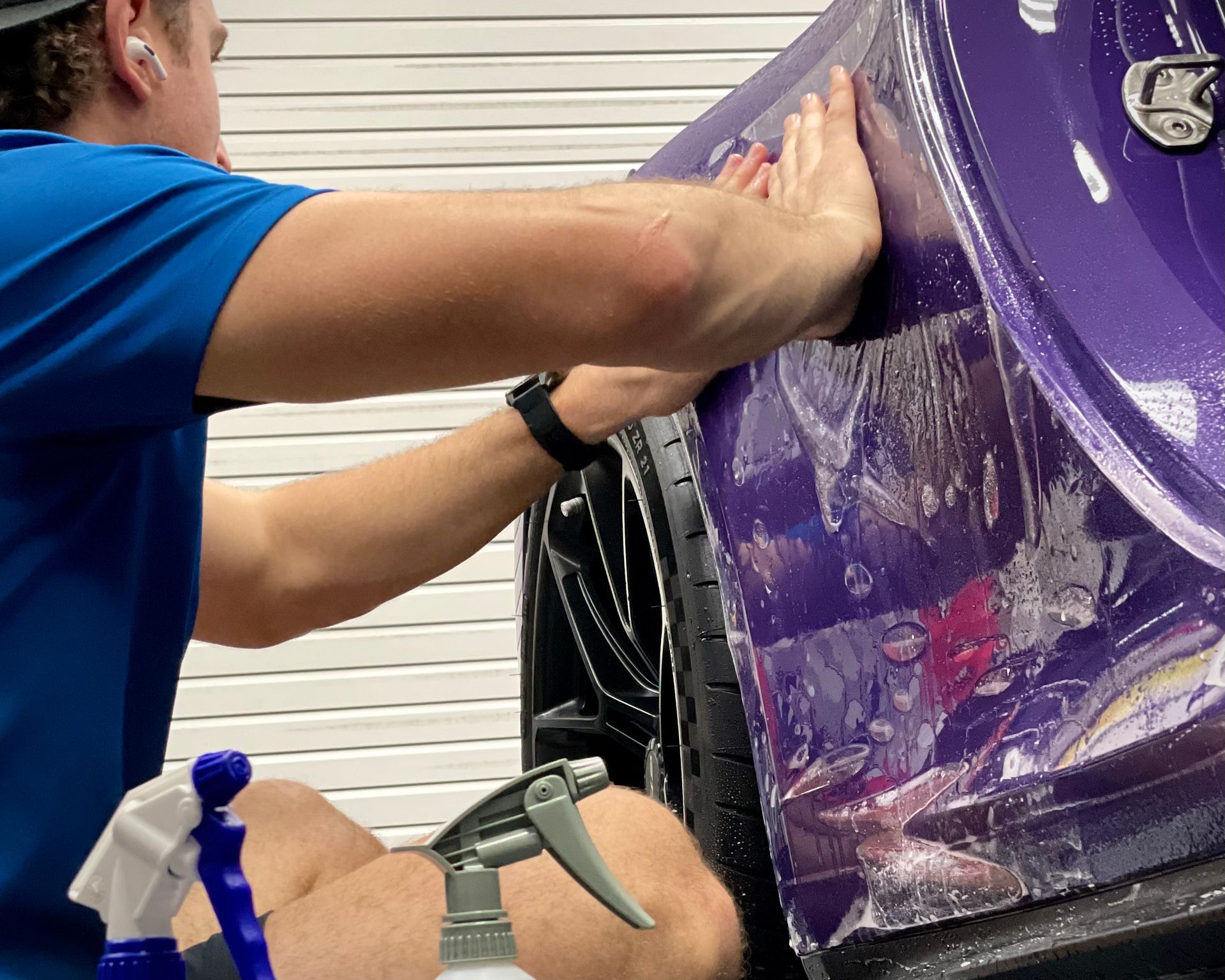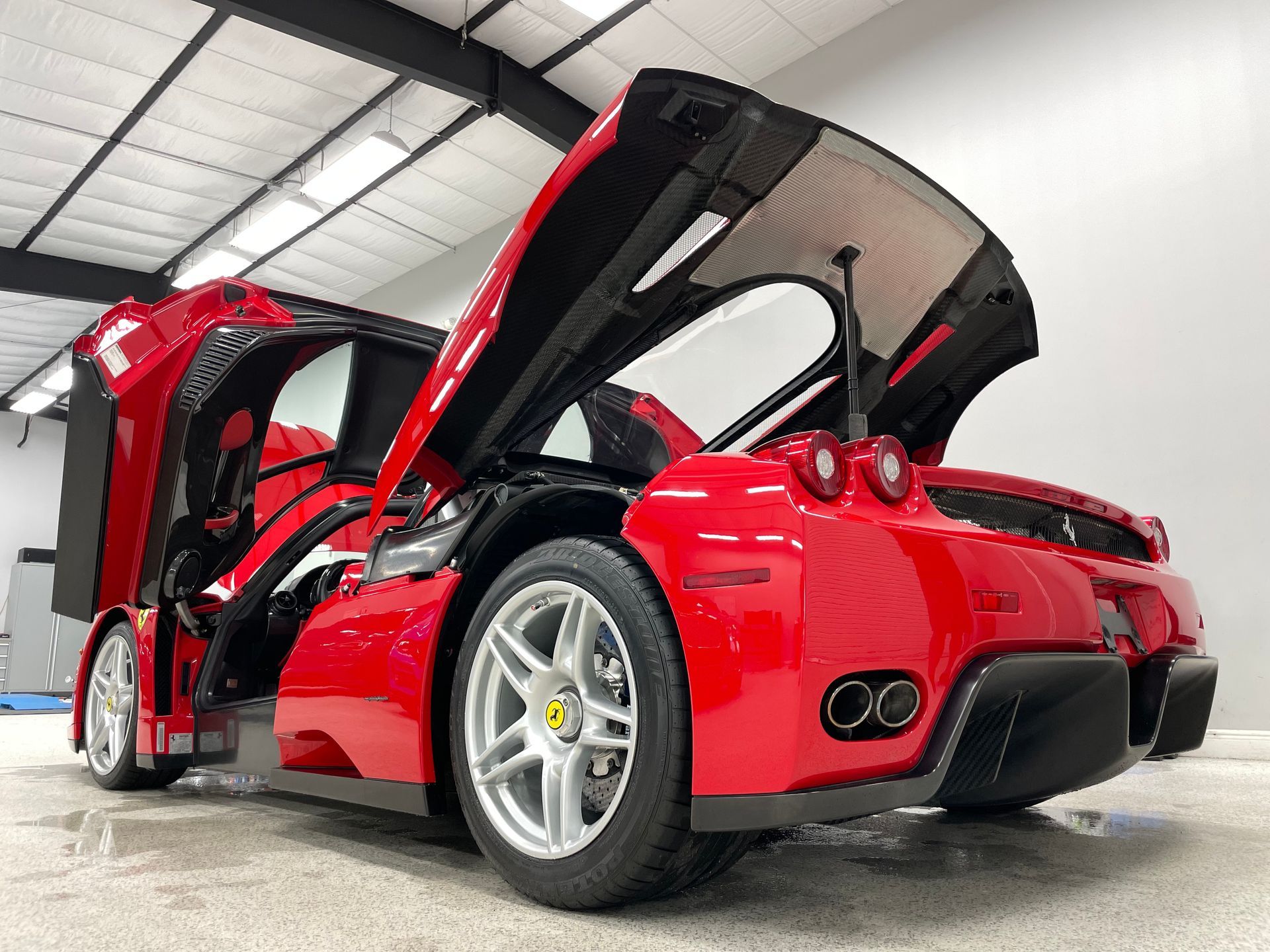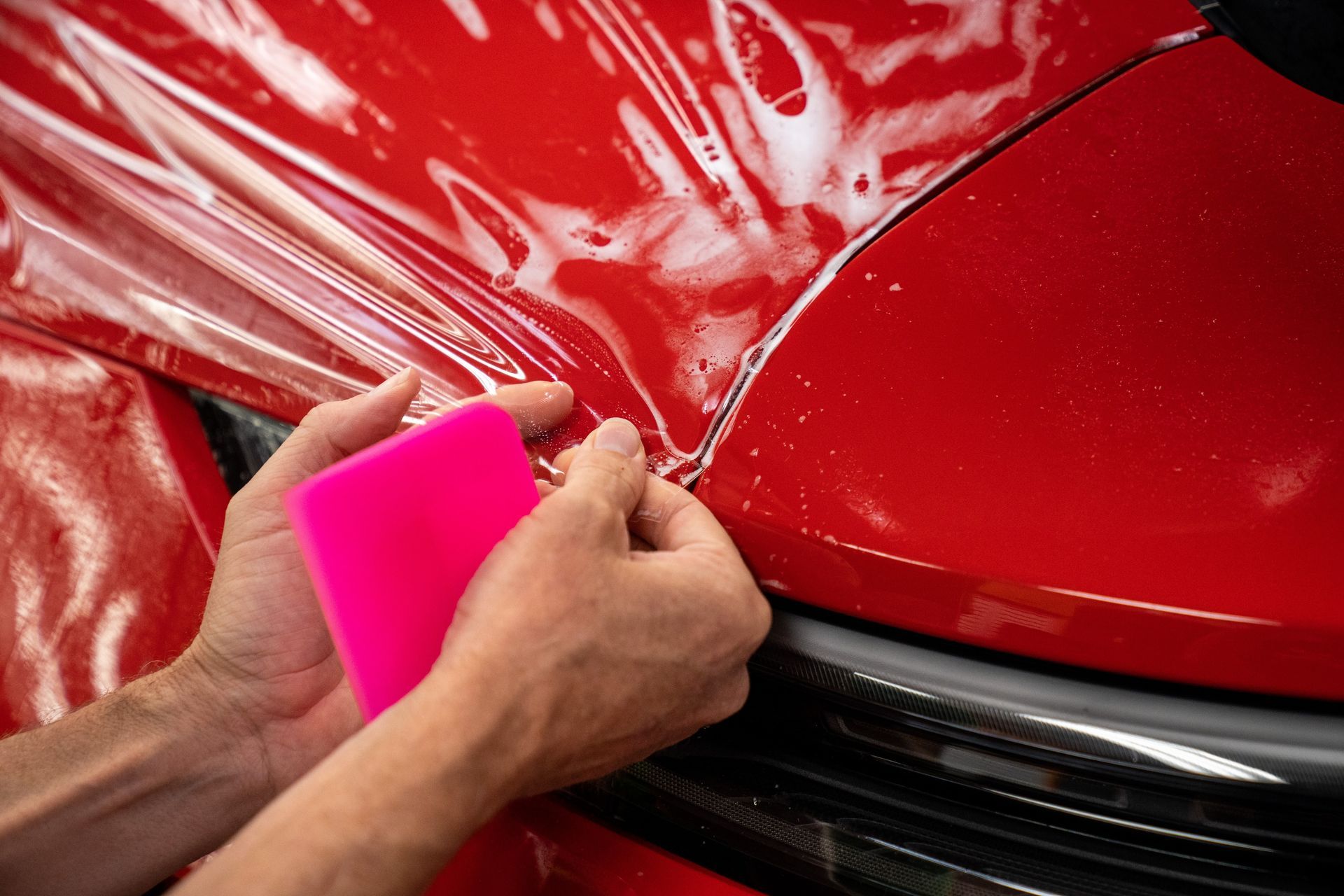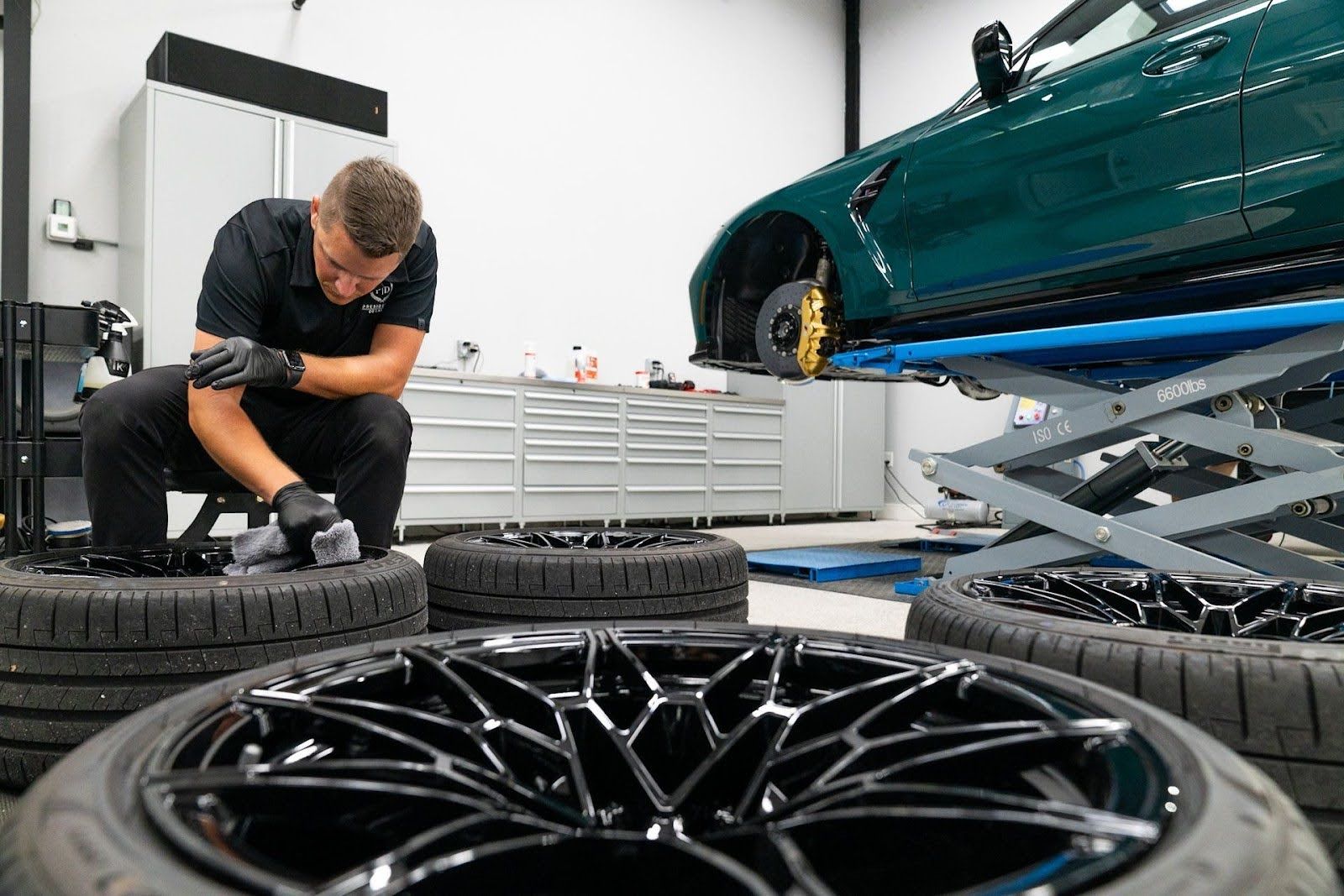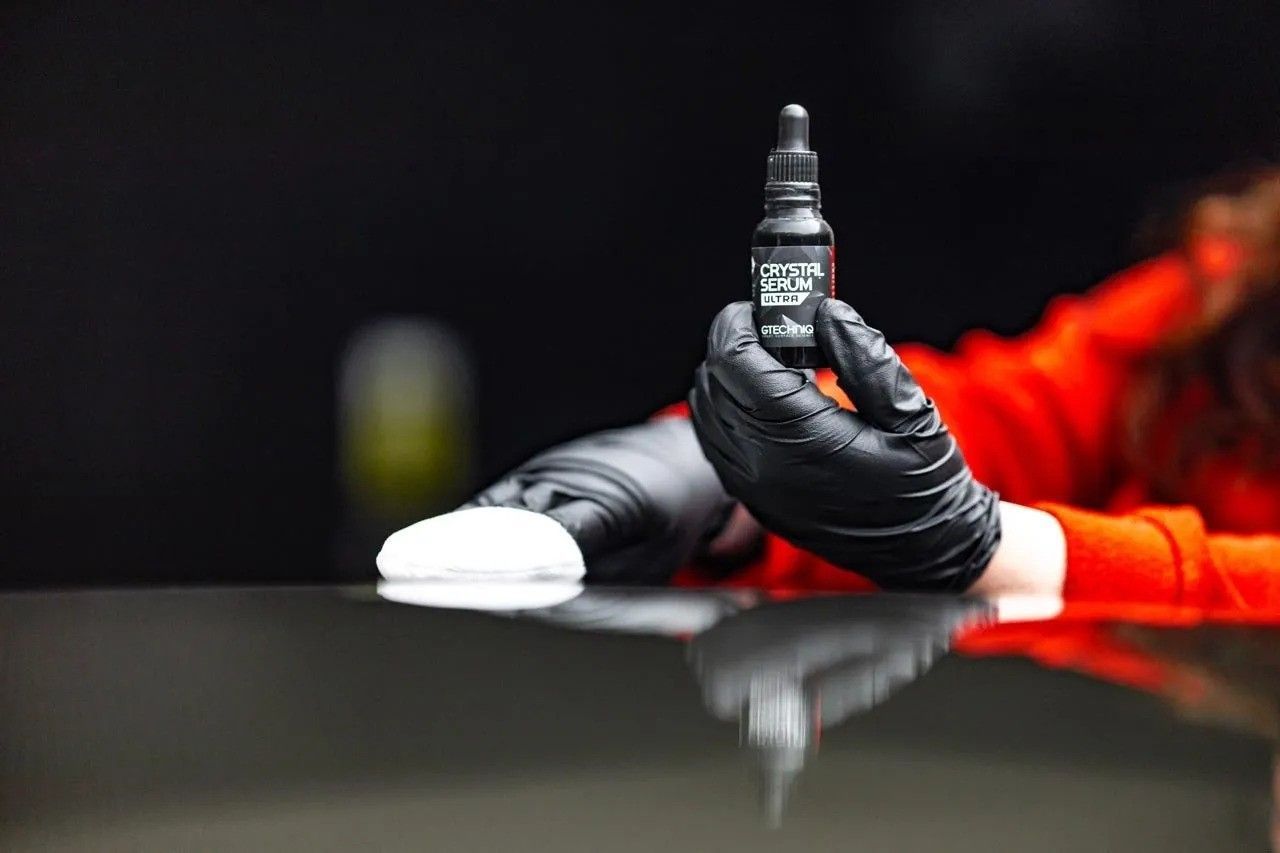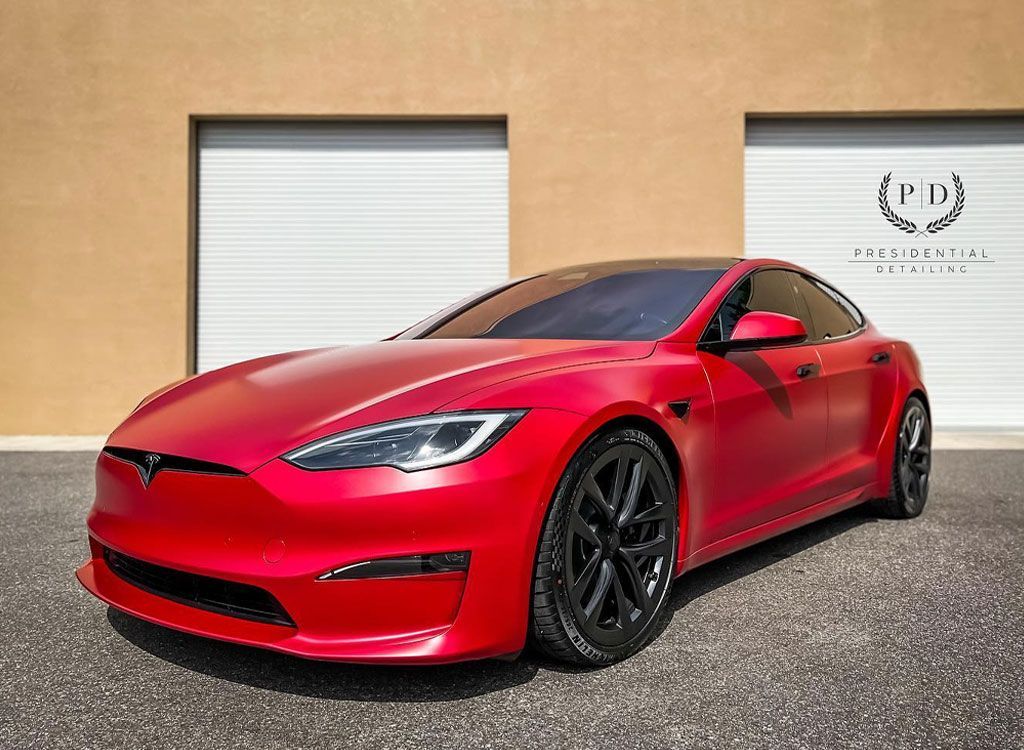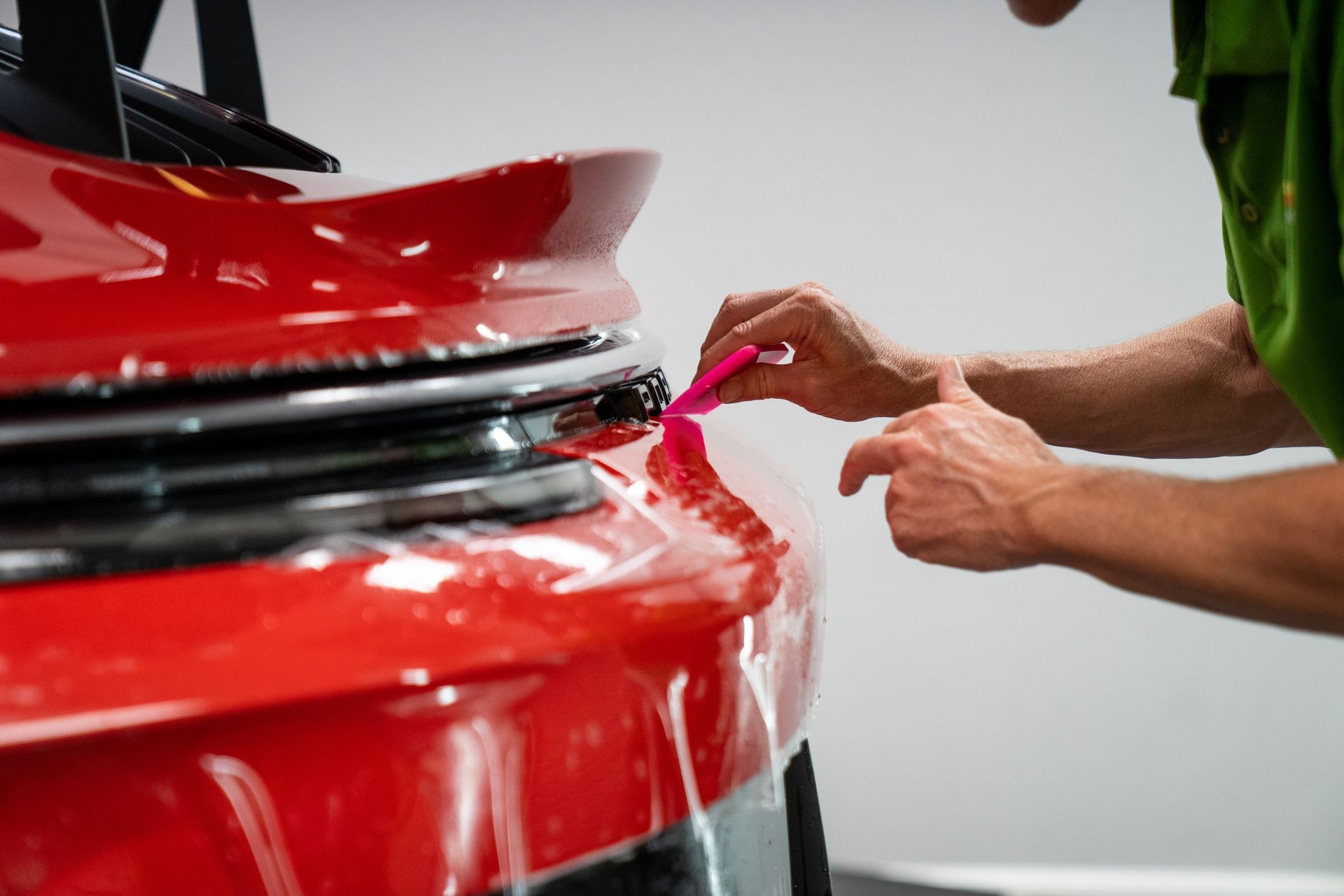Debunking Common Misconceptions About Paint Protection Film: Uncovering the Truth
CALL (813) 723-9679
GET A FREE ESTIMATEPaint protection film is not a hassle but a protective tool for your car. It's not as complex to install as rumors suggest, and with an expert's help and dedication, you can have it hooked up on your vehicle. Contrary to popular belief, it doesn't crack in sunlight. Thanks to advances in technology, films are designed for durability in all kinds of weather. Fears that the film could damage your car are unfounded; the PPF adheres only to the exterior and doesn't harm your car's original paint job. Let's delve deeper into these myths.
One common misconception about paint protection film is that it may damage the car's exterior, but in reality, high-quality paint protection films only adhere to the surface and can be removed without causing harm. Additionally, there is a myth that all PPFs are the same; however, different manufacturers produce clear bras of varying quality, so it's essential to choose a reputable brand.
Myths About Paint Protection Film
Myth: Paint protection film is difficult to install.
Fact: While professional help is recommended due to the complexity of the installation process, it is not impossible to install it on your own with some expertise and patience. Installing a paint protection film does require precision and skill to ensure it fits perfectly without any bubbles or creases. However, with the right tools, knowledge, and patience, some car enthusiasts successfully apply PPF to their vehicles at home. But do keep in mind that if you're not confident, it is better to seek professional paint protection film assistance to avoid any mishaps during the installation process.
Myth: Films crack on exposure to the sun.
Fact: The use of materials designed to last a long time and resist sun exposure has increased durability in a variety of weather conditions. In the past, UV exposure could cause some types of films to turn yellow or crack over time. However, modern, high-quality paint protection films are designed using advanced technology that ensures resistance to UV rays and other environmental factors. Through innovation in materials and production processes, these films maintain their transparency and flexibility even after prolonged exposure to sunlight. It's like having sunscreen for your car—protecting it from harsh rays and maintaining its original appearance.
Myth: The film might damage your car.
Fact: PPFs only stick to the car's exterior and will not affect the paint when removed. However, it is best to consult a professional for removal. Some fear that PPF might harm their car's paintwork over time due to adhesion or chemical reactions. In reality, PPF is designed to bond with the external surface of the vehicle without leaving any residue or causing damage upon removal. When professionally installed and removed, a paint protection film acts as a shield against scratches and abrasions without compromising the underlying paint. It's comparable to adding an extra layer of clothing, providing protection without altering what's underneath.
It's vital to understand that technological advancements in PPF have eradicated many concerns surrounding its installation, longevity, and impact on the vehicle. These debunked myths shine light on the practicality and advantages of using high-quality PPF for your car's protection without fretting about potential drawbacks.
Paint Protection Film: Expense or Investment?
When it comes to preserving your car's paint, you might question if paint protection film is worth the cost. It's more than just a layer of protective coating; it’s an investment in maintaining your vehicle's pristine look for years to come. PPF acts as a shield against chips, scratches, and environmental damage, leading to fewer visits to the body shop and reduced expenses on touch-ups and repairs. Let's consider this in terms of value. By protecting it from harm from road debris, UV rays, and weather elements, clear bras help maintain the overall appearance and condition of your vehicle. By averting these issues, PPF ultimately safeguards the resale value of your car. In other words, it's an investment that provides long-term protection for your asset.
When you drive a brand-new car off the lot, its value drops immediately. This depreciation continues over time, but maintaining the exterior appearance can help preserve its worth. Installing a paint protection film can increase the likelihood of retaining a higher resale value compared to a car without this added protection. While it’s evident that a clear bra offers excellent value for maintaining the exterior condition of your vehicle, another aspect to consider is how it impacts your finances over time. Although the initial installation cost may seem like an expense at first glance, when measured against the long-term benefits in reduced maintenance costs and potential resale value, it becomes clear that this protective film is an investment rather than an expense.
Paint Protection Film Application Process
When it comes to protecting your car's paint, the application process of paint protection film is a delicate art. Skilled professionals handle this process with precision, and each step is crucial in ensuring that the film provides the utmost protection. Let's break down each step in the application process.
Step 1: Surface Preparation
Before the application of a paint protection film, it's essential to prepare the car's surface adequately. Any dust particles, dirt, or residual wax can interfere with the adhesion of the film, affecting its effectiveness in protecting the paint. Thoroughly cleaning the surface ensures optimal adhesion, allowing the PPF to form a strong bond with the car's exterior. Imagine trying to stick a bandage on a dirty wound; it simply wouldn't work as well. The same principle applies here; a clean surface is crucial for the film to do its job effectively.
Step 2: Precise Cutting
The next crucial step in the application process is the precise cutting of the film. This isn't just about cutting any ordinary material; we're talking about custom-cutting a film to fit the exact contours of your vehicle. This meticulous process ensures complete coverage and a seamless finish, leaving no area vulnerable to potential damage. Just like tailoring a bespoke suit, precision cutting ensures that every inch of your car's exterior is shielded from chips, scratches, and debris.
Step 3: Application
This step involves experts carefully applying the film to the car's surface with unmatched dexterity. Skilled professionals use specialized tools to eliminate bubbles and creases during the application process, ensuring a smooth, uniform finish. It's like putting on a screen protector on your smartphone—only, in this case, it's for your car! The precision and skill exhibited during this step are paramount in guaranteeing that your car receives top-notch protection without compromising its visual appeal.
Step 4: Curing
After the film is skillfully applied, it needs time to cure and adhere properly to the vehicle's surface. The curing process is essential for establishing a lasting bond between the film and the car, ensuring long-term protection against chips, scratches, and environmental elements. You can think of this step as akin to letting concrete set, giving it time to solidify and become steadfast in its protective role.
Each step in the application process plays a pivotal role in ensuring that your car receives impeccable protection without sacrificing aesthetics. By understanding these processes, you gain insight into why professional installation is imperative when it comes to safeguarding your vehicle's paint for years to come.
Extra Protective Measures for Your Car
So, you've invested in paint protection film to shield your car's exterior from scratches and scuffs. But why stop there? To really ensure your car is protected against the elements, it's worth considering the application of ceramic coatings. These coatings act like an invisible force field on the surface of your vehicle, adding a further layer of defense against dirt, UV rays, and environmental contaminants. Ceramic coatings are designed to provide enhanced gloss and durability to your car's paintwork. By creating a chemically resistant surface, they offer protection from bird droppings, bug splatters, and other harsh substances that can eat away at the paint over time. Plus, they make cleaning easier; water, dust, and dirt will slide right off the treated surface, leaving your car looking sparkling clean for longer periods of time.
Your car can have a glossy finish that resists fading in the blazing sun or damage from road grime. That's what ceramic coatings bring to the table—a long-lasting shine that resists wear and tear. In fact, when combined with paint protection film, ceramic coatings act as a dynamic duo to safeguard your vehicle against a wide range of hazards. While a clear bra provides a physical barrier against scratches and chips, ceramic coatings work on a molecular level to shield your car from environmental threats. High-quality PPFs are invisible and protective against scratches, scuffs, and debris.
Applying a ceramic coating isn't just a one-and-done task. If you want to maintain its effectiveness over time, regular maintenance is crucial. According to the manufacturer's recommendations, this might entail routine inspections and reapplications. It's important to understand that while a ceramic coating provides excellent protection, it is not a foolproof solution against all possible damage to your car's paintwork. Keep in mind that extra protective measures like ceramic coatings go hand in hand with PPF to ensure comprehensive protection for your car's exterior. The combination creates a robust shield that not only keeps your car looking great but also enhances its longevity amidst various environmental factors.
Assessing the Quality of Paint Protection Film
When safeguarding your car's paintwork, not all paint protection films are created equal. The quality of the film can significantly impact its performance and longevity. How do you gauge the quality of paint protection film? It's not as challenging as it might seem—let's break it down.
- Durability - High-quality paint protection films are engineered to withstand the wear and tear of daily driving, effectively shielding the paint from road debris, stone chips, and scratches without showing signs of damage themselves. When assessing PPF options, consider its ability to maintain its protective qualities over time, especially in harsh weather conditions.
- Longevity - A reliable clear bra should have a long lifespan, providing protection for several years without needing frequent replacements. Look for PPFs that come with a manufacturer's warranty, indicating their confidence in the product's durability.
- Optical Clarity - The best paint protection films are designed to be nearly invisible once applied to the vehicle's paintwork, retaining the color and brilliance of the original paint while offering seamless protection against blemishes.
- Scratch Resistance - A top-notch paint protection film should be highly resistant to scratches, scuffs, and abrasions—an essential factor in maintaining the pristine look of your vehicle's paint over time.
- Discoloration Resistance - Sun exposure and environmental factors can cause some PPFs to discolor over time, leading to a noticeable mismatch with the original paint color. The best paint protection films are formulated to resist discoloration, ensuring that your vehicle maintains a consistent appearance throughout its lifespan.
Researching user reviews and independent laboratory tests can offer valuable insights into how different PPF products fare in terms of durability, longevity, optical clarity, scratch resistance, and resistance to discoloration. By understanding these key qualities of high-quality paint protection, you can confidently evaluate different options and make an informed decision regarding the protection of your vehicle's paintwork.
The Finest Paint Protection Film Installations in Clearwater, FL
Preserve the beauty of your prized vehicle with Presidential Automotive Detailing, setting the standard for the finest paint protection film installations in Clearwater, FL. Our meticulous craftsmanship and unwavering commitment to excellence ensure that your car receives the highest level of protection against road debris, stone chips, and environmental hazards. At Presidential Automotive Detailing, we go beyond ordinary PPF installations, delivering precision and expertise that truly set us apart. Trust our skilled technicians to safeguard your vehicle's paint while maintaining its aesthetic allure. Improve your driving experience with the unmatched protection our top-notch PPF installations provide. Choose Presidential Automotive Detailing for the ultimate in automotive care, because your car deserves nothing but the best. Schedule your appointment now or call us at
(813) 723-9679 and experience automotive protection redefined in Clearwater!





